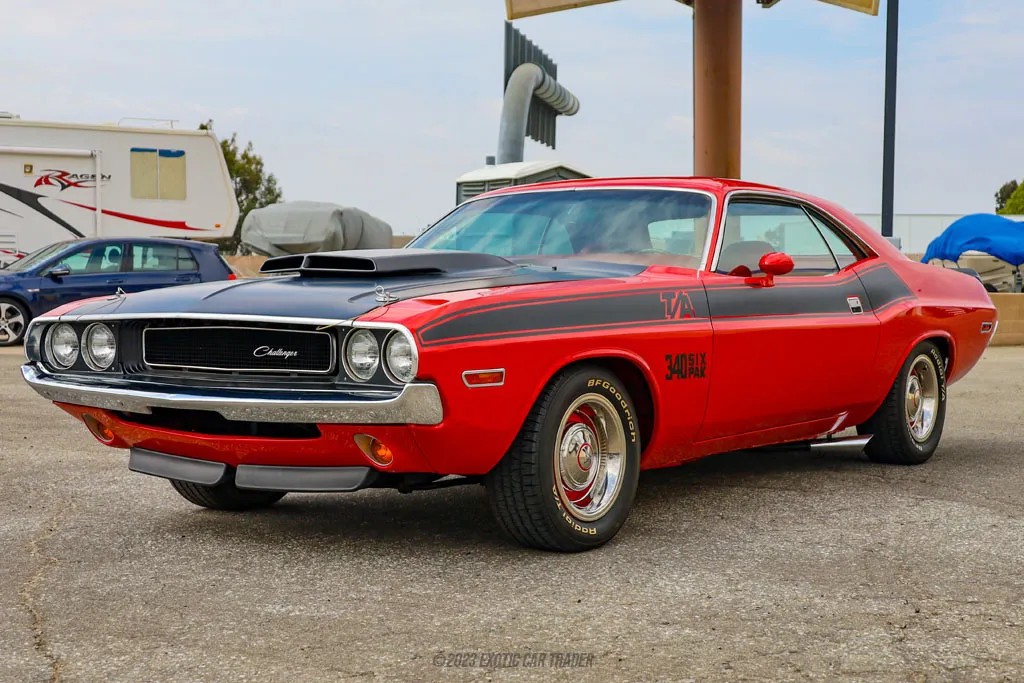Launched on March 25, 1966, the Trans-American Sedan Championship was the manufacturer’s arm-wrestling competition for modified street cars, serving as a sales trampoline for Detroit. By 1970, nearly every make with racing pedigree had a Trans Am version of a wild pony car. Except for Dodge – who missed out on the game by not having a pony car at all. That changed when the Challenger stepped in and threw the gauntlet.
While the horsepower wars were in full swing, Mother Mopar relied on big-gun names from Plymouth and Dodge to soldier on as full-blown muscle cars. On the pony car front, the Barracuda was left to face the competition pretty much on its own.
The tables turned together with the decade in 1970: Plymouth restyled its legendary predatory fish and received the unleashed all-new Dodge Challenger to rain piston bombardments on the Michigan foes. Both cars were built on a new platform but had no sheet metal in common. However, they received special treatment to counter the small-block heavy punchers from across the road.
Ford had the Little Boss, the 302, and GM had the Chevy Camaro Z/28 with an equal displacement. Long hoods, short decks, muscular stance – precisely what the refreshed ‘Cuda and the Challenger looked like. The Mopars got the 340 V8 for firepower, fitted with a triad of double-throat carbs.

While the Barracuda got the All-American Racers moniker (AAR), the Dodge was bluntly in-your-face named T/A, leaving nothing to the imagination about its Trans-Am intentions. Dodge had to build a minimum number of cars to be allowed on the track.
Chrysler rolled up its sleeves and shifted production into high gear. By April 1970, all Dodge Challenger T/A automobiles were already assembled, despite being announced just two months before. (Announced doesn’t mean that the corporation had no intention of building the cars until then; it just kept the cards close to its chest).
2,399 in total – 989 manuals, 1,410 automatics – were manufactured, and Dodge would not replicate the effort in the Challenger’s short-lived first generation. As such, the brightly colored, heavy-decal’ed examples of this model are something collectors aren’t shy of.

One of the less commonplace four-speeds – a red-on-red beaut’ – has received overdoses of TLC (probably in exchange for all the smiles per gallon it delivered during its 86,000-odd miles on the road. About 138,000 kilometers).
The car sits on correct tires – different size front and back (the Challenger was among the first to break away from the egalitarian conveniences of its epoch) – and the chrome-tipped exhausts shine from under the rocker panels. Although not new – the Corvette had had this type of side pipes for over a decade and a half – the lateral exhausts were something unseen on the civilian non-sportscars of the 60s and 70s.
Alongside the distinct air ducts on the hood, the Challenger T/As smoking barrels gave strong hints about the muscle up front. The 340 cubic-inch V8 (5.6-liter) small-block was no joke: rated at a deliberately introverted 290 hp (294 PS) and 345 lb-ft (468 Nm), the triple dual-barrel wasn’t afraid to leave parallel marks on the pavement.
This late-build Trans-Am – finished on April 3, 1970 – received a restoration, hence its overall encouraging condition and the $120,000 price tag. The high-performance engine and drivetrain are hopefully the original, although the selling site doesn’t elaborate on this aspect.
